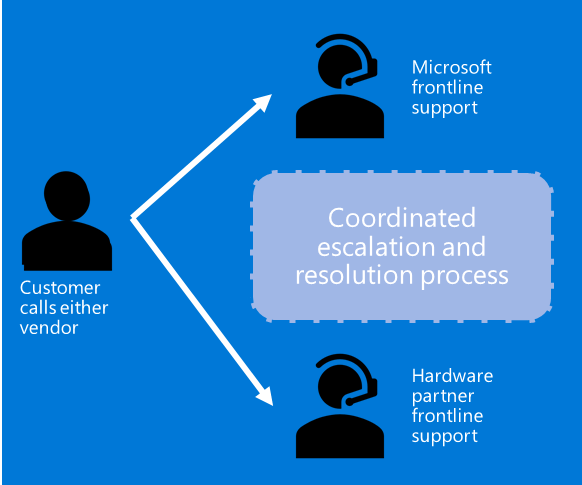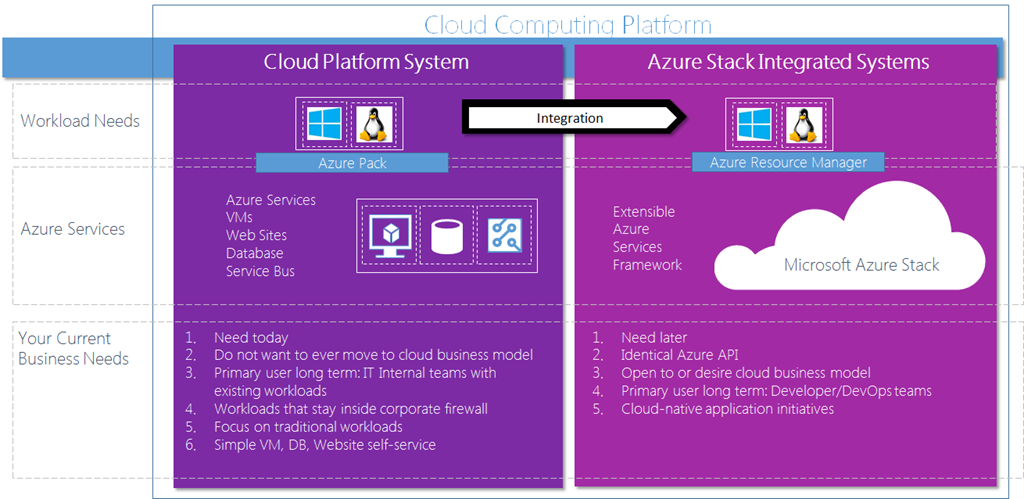Azure Stack Support Model
As we already know, the Integrated Systems (Dell EMC, HPE, and Lenovo in this initial iteration, later Cisco, Huawei and Avanade will come into play) will be the ones providing the hardware and the Azure Stack solution will be pre-installed.
That means for every Azure Stack customer, in case of an issue in the solution, the root cause can reside in the hardware or software without much clarity for the Azure Stack admin. So, how a customer should interact with support? Which vendor needs to take the call first?
Here are quick highlights to understand the support scenario in Azure Stack:
- When support assistance is needed, customers can call the Integrated System or Microsoft. A consistent support experience no matter who you contact for support will be delivered.
- Each Integrated System will have their own support contract, different from Microsoft’s support.
- The Integrated Systems will have different levels of support, as they have right now for their hardware solutions.
- There will be a coordinated escalation and resolution process, transparent for the customer.
- Hardware solutions support will be provided by the Integrated System and the cloud services support delivered by Microsoft.
What Will Happen to Azure Pack
For those that don’t know, Windows Azure Pack (WAP), appeared in 2012 with Windows Server 2012 and System Center 2012 releases, it was the first definition for Microsoft’s software-defined hybrid cloud and bundles Windows Server, System Center and more into a package that can run VMs created in Azure and then downloaded to your own datacenter.
There’s also an additional component: Cloud Platform System (CPS), pre-installed and configured hardware with the integrated systems, offering automation and integration with Microsoft Azure. WAP appears also as one of CPS components to achieve this similar hybrid cloud scenario with Windows Azure.
As we can see, the overall CPS model is quite similar than what we know now as Azure Stack. Microsoft intend is to maintain and encourage all customers that already have WAP and/or CPS to extend capabilities with Azure Stack.
Microsoft will be releasing the WAP/CPS connector with Azure Stack. This connector will have the following features:
- Connecting any existing WAP/CPS platform with Azure Stack in order to allow the customer to preserve any investment already made in these platforms.
- Enabling tenants to access VMM IaaS resources from Azure Stack portal through seamless integration.
- Will be released through WAP/CPS Update Rollup later in the year (late Q4 2017 according to Microsoft).
Related materials:






